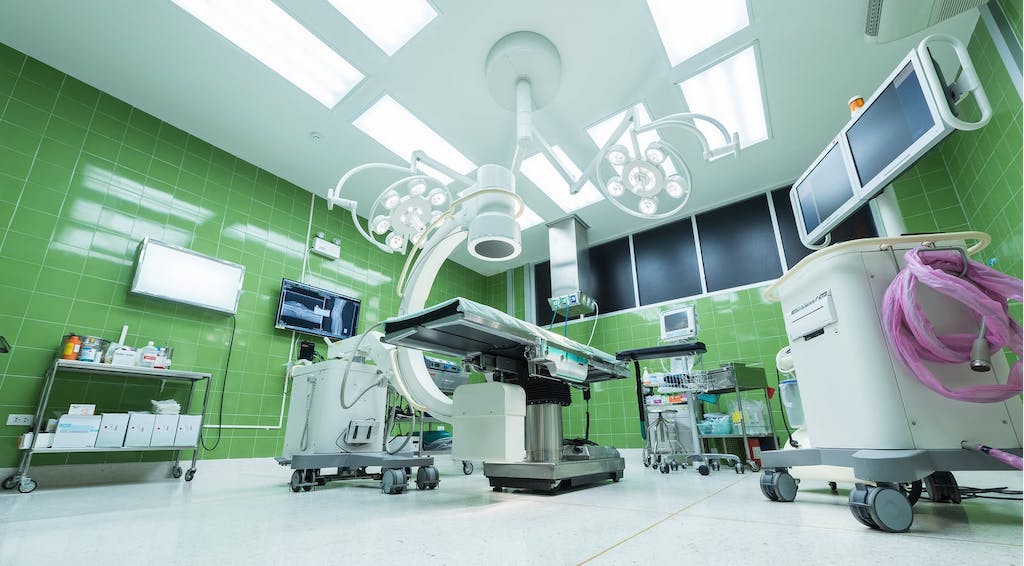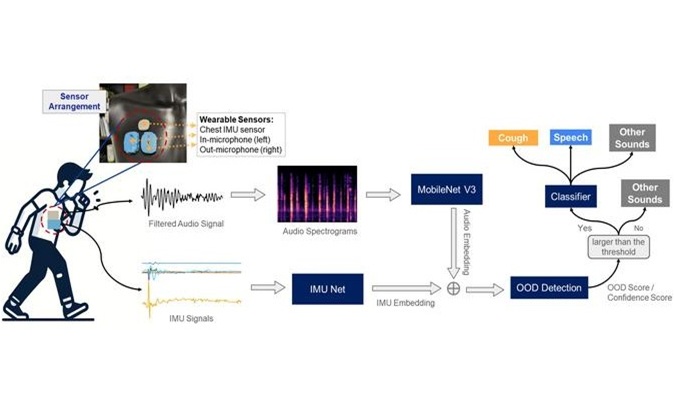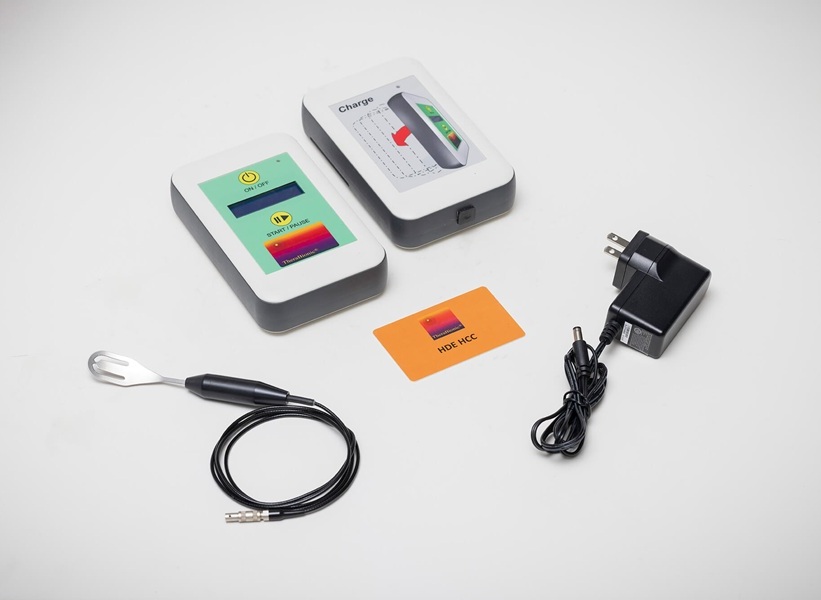Global Operating Room Integration Market Driven by Increase in Medical Procedures
|
By HospiMedica International staff writers Posted on 29 Aug 2022 |

Healthcare is benefiting greatly from increasing sophistication of technology, as a result of which operating room integration has come into play. As a result of the increasing complexity of advanced surgeries, hospitals are opting for technology developments in operating rooms. The use of integrated operating rooms outfitted with surgical tools and technologies such as integrated digital imaging diagnostics and surgical instruments with robotic 3D imaging, surgical robots, and virtual reality is also on the rise. New surgical technology allows surgeons to boost speed and safety in the operating room by guiding their motions and providing unparalleled access to information. This trend is projected to continue in the next years, with an increasing number of hospitals focusing on integrated operating rooms. As a result, the global operating room integration market size which was valued at over USD 1.50 billion in 2021 is projected to surpass USD 4.20 billion by 2030, growing at a CAGR of 10.96% from 2022 to 2030. The increasing demand for advanced technological applications, rise in the number of medical procedures, patient safety concerns, and growing desire for minimally invasive surgeries are expected to be the key growth drivers of the global operating room integration market.
These are the latest findings of Verified Market Research (Lewes, DE, USA), a global research and consulting firm.
The term “operation room integration” refers to the integration of the operating room’s systems. Operating rooms are becoming increasingly complicated as more modern imaging and diagnostic technology for the operating room are introduced, such as the inclusion of operating room instruments, surgical illumination, picture capture devices, medical displays, and more. The integration system is primarily intended to simplify or consolidate data. This incorporates audio, video, patient information, room and surgery lights, medical equipment, video conferencing, and other features. The operation room integration enables a single user to control all systems from a central command center. This enables more efficient processes but also increases the danger to patient safety.
When properly constructed, operating room integration can reduce the complexity of hospital systems. One of the most significant benefits of operating room integration is the ability for the surgeon to continue operating while using real-time data. The operating room is challenging work that demands focus, efficiency, communication, and professional knowledge. In the absence of operating room integration, surgical teams must navigate the operating room to perform tasks such as checking a computer for patient information, writing this information on a board, and entering the surgical field to display or change the video they are viewing. As a result, operating room integration systems are deployed to combine and organize all patient data for surgical staff throughout a treatment, minimizing congestion and streamlining information across numerous platforms.
With an increasing number of hospitals focusing on integrated operating rooms, the operating room integration market will continue to grow. Increasing mergers, partnerships, and acquisitions among the market participants are also likely to drive the expansion of the worldwide operating room integration market through the forecast period. However, the high prices of various equipment and related software, makes the setup cost of an integrated operating room relatively higher. The cost of building-integrated operating rooms is extremely high in the developing countries. The high installation and maintenance expenses of integrated operating room technologies have hampered their acceptance. Once implemented, this program must be continuously updated in accordance with the user’s needs and software upgrades, resulting in ongoing costs.
Based on device type, the documentations & recording systems segment is expected to record a higher growth due to their wide applications in the operating room. These systems assist in the management of all records from various sources and put them on a unified platform to assist surgeons with patients’ histories and other vital information for the surgery. Based on application, the surgery segment is expected to register a higher growth due to recent advancements in various kinds of surgeries. Also, the surgical equipment needed for a specific surgery has to be organized in a particular way while operating on the patient. This, in turn, creates demand for operating room integration in the surgery segment. Based on end user, the hospital segment is expected to register the highest growth due to growing patient emphasis on early and effective disease management, increasing number of diagnostic and surgical operations performed in hospitals, and rise in the number of hospitals being established in the emerging regions.
Geographically, the operating room integration market in Asia Pacific is expected to register the highest growth during the forecast period, driven primarily by the procedural benefits of integrated operating rooms, rising prevalence of chronic diseases, and increasing use of innovative surgical treatment approaches in the region. Other factors driving the Asia Pacific operating room integration market include ongoing healthcare infrastructure improvement and increased market availability of innovative surgical technologies in the region.
Latest Business News
- Philips and Masimo Partner to Advance Patient Monitoring Measurement Technologies
- B. Braun Acquires Digital Microsurgery Company True Digital Surgery
- CMEF 2025 to Promote Holistic and High-Quality Development of Medical and Health Industry
- Bayer and Broad Institute Extend Research Collaboration to Develop New Cardiovascular Therapies
- Medtronic Partners with Corsano to Expand Acute Care & Monitoring Portfolio in Europe
- Expanded Collaboration to Transform OR Technology Through AI and Automation
- Becton Dickinson to Spin Out Biosciences and Diagnostic Solutions Business
- Boston Scientific Acquires Medical Device Company SoniVie
- 2026 World Hospital Congress to be Held in Seoul
- Teleflex to Acquire BIOTRONIK’s Vascular Intervention Business
- Philips and Mass General Brigham Collaborate on Improving Patient Care with Live AI-Powered Insights
- Arab Health 2025 Celebrates Landmark 50th Edition
- Boston Scientific Acquires Medical Device Company Intera Oncology
- MEDICA 2024 to Highlight Hot Topics of MedTech Industry
- Start-Ups To Once Again Play Starring Role at MEDICA 2024
- Boston Scientific to Acquire AFib Ablation Company Cortex
Channels
Critical Care
view channel
Origami Robots to Deliver Medicine Less Invasively and More Effectively
Delivering medicine to ulcers or other internal sites often requires invasive procedures that can disrupt surrounding tissues and lengthen recovery times. Traditional magnetic actuators used in soft robotics... Read more
Improved Cough-Detection Technology Aids Health Monitoring
Coughing serves as an important biomarker for tracking a variety of conditions and can help monitor the progress of respiratory diseases or predict when someone’s asthma is being exacerbated.... Read moreSurgical Techniques
view channel
Novel Glue Prevents Complications After Breast Cancer Surgery
Seroma and prolonged lymphorrhea are among the most common complications following axillary lymphadenectomy in breast cancer patients. These postoperative issues can delay recovery and postpone the start... Read more
Breakthrough Brain Implant Enables Safer and More Precise Drug Delivery
Delivering medication directly to specific regions of the brain has long been a major challenge in treating neurological disorders. Current implants and infusion systems typically reach only one or two... Read morePatient Care
view channel
Revolutionary Automatic IV-Line Flushing Device to Enhance Infusion Care
More than 80% of in-hospital patients receive intravenous (IV) therapy. Every dose of IV medicine delivered in a small volume (<250 mL) infusion bag should be followed by subsequent flushing to ensure... Read more
VR Training Tool Combats Contamination of Portable Medical Equipment
Healthcare-associated infections (HAIs) impact one in every 31 patients, cause nearly 100,000 deaths each year, and cost USD 28.4 billion in direct medical expenses. Notably, up to 75% of these infections... Read more
Portable Biosensor Platform to Reduce Hospital-Acquired Infections
Approximately 4 million patients in the European Union acquire healthcare-associated infections (HAIs) or nosocomial infections each year, with around 37,000 deaths directly resulting from these infections,... Read moreFirst-Of-Its-Kind Portable Germicidal Light Technology Disinfects High-Touch Clinical Surfaces in Seconds
Reducing healthcare-acquired infections (HAIs) remains a pressing issue within global healthcare systems. In the United States alone, 1.7 million patients contract HAIs annually, leading to approximately... Read moreHealth IT
view channel
















